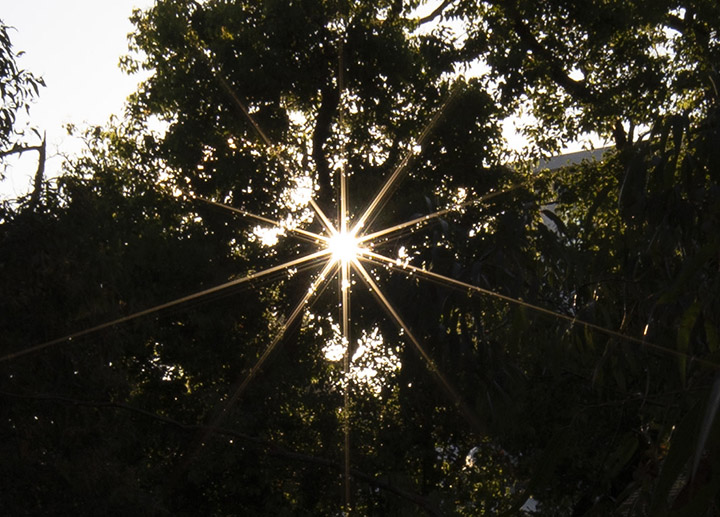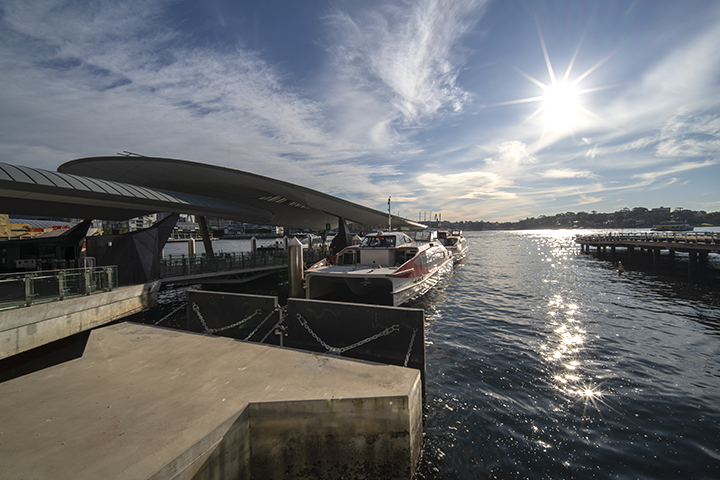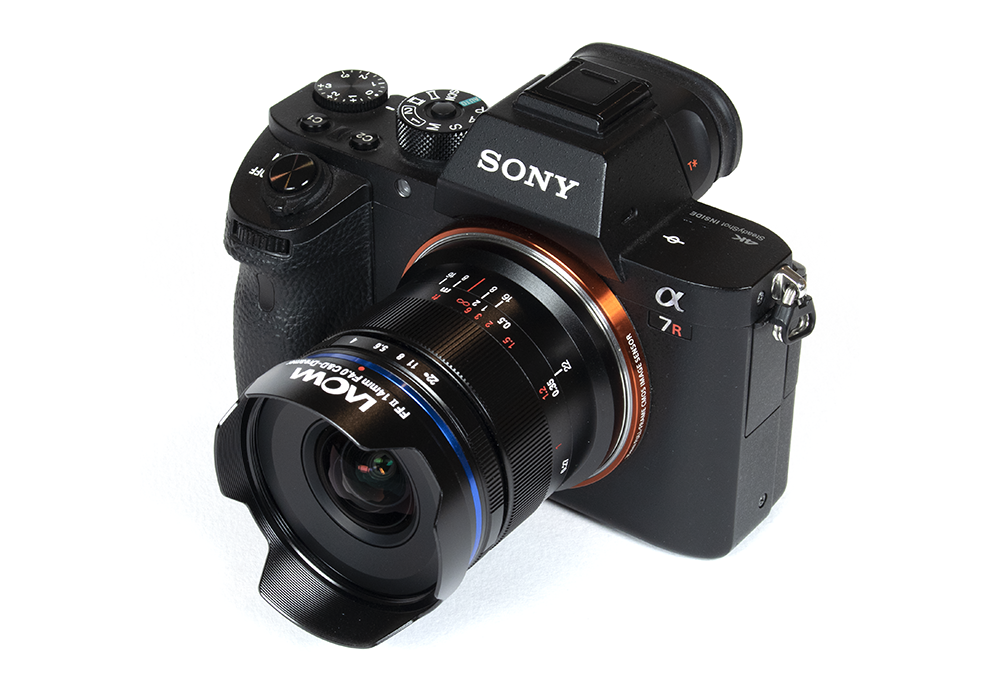by Klaus Schroiff, published September 2020
Introduction
Laowa has explored many extreme lens designs ever since they started in 2013. So far they have focused most of their efforts on either ultra-wide or macro lenses. With the inevitable demise of the DSLR segment, many of their latest lenses are now targeting the current sweet spot of the market, thus full-format mirrorless cameras. Just prior to the review, they released a set of 3 quite insane prime lenses – an all manual 9mm f/5.6 FF RL, an 11mm f/4.5 FF RL, and the Laowa 14mm f/4 FF RL Zero-D. The latter is the most affordable in this row at just USD549 (up to USD649 in Leica M mount) and covered in this review. Just like its wider cousins, the 14mm f/4 has been designed to a target size. Or in other words – it is small, to be precise 58mmx59mm small and at just 228g, it’s light-weight, too. Compact designs have been another Laowa trademark over the recent years.
In a typical Laowa tradition, the build quality is very good indeed. The lens body is made of metal down to the mount and up to the tiny built-in hood. The focus ring is dampened and operates smoothly. The aperture ring offers full stops with clicks only. Weather-sealing has not been implemented. However, it uses an internal focusing mechanism and without any moving outer parts, it’s at least reasonably protected. As you can see the lens comes in black but there’s also a silver version for Leica M only.

As hinted above, the Laowa 14mm f/4 FF RL Zero-D is an all-manual lens with no electronic coupling (Note: on Leica M cameras you do have rangefinder coupling). While this can be annoying it shouldn’t be a showstopper for an ultra-wide lens though. However, even so, this doesn’t mean that you shouldn’t care about accurate focusing. On our test sample, “infinity” focus had little to do with infinity – the infinity mark was way past it. To some degree, this is Ok in order to compensate for thermal effects but it was “a little over the top” in our case though. However, you can tune the infinity setting by losing the middle screw of the focus tap and moving it to a more accurate position. If you decide to purchase this lens, it’s best to check the focus calibration prior to the first photo shooting in order to avoid nasty surprises during image post-processing.
| Specifications | |
|---|---|
| Optical construction | 13 elements in 9 groups inc. 3xELD, 2xHR, 1xUHR elements |
| Number of aperture blades | 5 |
| min. focus distance | 0.27m (max. magnification 1:?) |
| Dimensions | 58x59mm |
| Weight | 228g |
| Filter size | 52mm |
| Hood | petal-shaped, built-in |
| Other features | – |
| Mounts | Sony E, Nikon Z, Leica M, L-mount, Canon RF |
Distortion
Ultra-wide angle lenses tend to produce a certain degree of barrel distortion. While we can’t really confirm the classified Zero-D(istortions), the Laowa 14mm f/4 FF RL Zero-D is quite well corrected in this respect – which is also needed because image auto-correction isn’t supported. A barrel distortion of ~1.7% can be visible in certain scenes but it shouldn’t be a dealbreaker really.

Vignetting
The amount of vignetting increases the wider you push your design and the Laowa 14mm f/4 FF RL Zero-D is no exception to the rule. A light falloff of ~2.9EV (f-stops) is clearly visible at f/4 and stopping down results only in a fairly moderate improvement. The vignetting doesn’t get any better than ~1.8EV at f/8 and beyond. In the grand scheme of this, this is quite normal for such a lens but keep in mind that auto-correction can’t help you here. However, if needed manual vignetting compensation isn’t all that difficult in your favorite RAW converter.

MTF (resolution)
The resolution characteristic of the Laowa lens is generally good. The image center is very sharp straight at f/4 and the border quality is more than decent. The corners are a bit softer but still pretty good. Stopping down to f/5.6 improves the quality across the image field and even the corners make it across our “very good” mark here. Beyond f/8 diffraction is a limiting factor although f/11 remains very usable.
While this sounds quite positive, there are some caveats though. At shorter focus distances, the field curvature is very pronounced. To be fair here – usually, that’s rather irrelevant. How many flat field images at short focus distances have you taken in your life? A more severe issue was an optical alignment problem in our sample which showed up as a zone of softness in the lower-left mid-field. Hopefully, Laowa will be able to provide more consistency in current production batches to avoid such alignment issues.
Please note that the MTF results are not directly comparable across the different systems!
Below is a simplified summary of the formal findings. The chart shows line widths per picture height (LW/PH) which can be taken as a measure of sharpness. If you want to know more about the MTF50 figures you may check out the corresponding Imatest Explanations

Chromatic Aberrations (CAs)
Lateral CAs are well controlled with an average CA pixel width of ~0.8px at the image border and f/4. Stopping down improves this marginally.

Sunstars & Flare
“Sunstars” seem to be a quite popular topic in the community lately. Sunstars are an aperture effect. If a lens has an uneven number of aperture blades – like 5 in the case of the Laowa 14mm f/4 – you will get 10 rays. If a lens has an even number of aperture blades, the number of rays is the same (6 blades = 6 rays). And finally, if you have curved aperture blades, you get less defined sun stars. For best results, you should stop down to at least f/11, better f/16 (the Laowa only supports f/11 and f/22).
So as you can see below the Laowa 14mm f/4 does a very nice job with very defined and long rays which is preferred by most (as opposed to mushy & short rays)

Of course, it doesn’t have to be the sun producing the sun stars. Sunstars can also show up in reflections (see also the water surface below) and artificial light sources.
Another aspect that you can observe below is flare behavior. If you look very closely, you may spot ghosting but it’s not much really. Of course, you can always produce worse reflections if you push it but then why do you want that anyway.

Sample Images
It's always a bit of a fresh breeze when receiving a Laowa lens for a review because it's usually not about another variation of a mainstream topic.
The Laowa 14mm f/4 FF RL Zero-D isn't quite as extreme as its even wider cousins but this is also a good thing. While the Laowa 9mm f/5.6 FF is even more dramatic, a 14mm f/4 is simply usable in more real-life situations. And it doesn't disappoint optically although it also has a few issues. Images are very sharp in the image center and the borders are also very decent. Stopped down to f/5.6, this applies to the image corners as well. Lateral CAs are minimal for such a lens and image distortions are also very low. Laowa decided to implement a rather simple aperture mechanism with just 5 straight blades. If this was a portrait lens, this would have been a reason for concern but on an ultra-wide lens, this setup can produce very nice sun stars at small aperture settings. Flare is also quite well controlled. Ultra-wide lenses tend to produce a quite rough bokeh but it's actually pretty smooth here. In terms of weaknesses, we have to list at least two. Vignetting is very high even at f/8 and field curvature is an issue at closer focus distances.
The build quality of the compact Laowa lens is very good thanks to a tightly assembled all-metal body and smooth controls. The designers even managed to avoid the usual bulb-like front element thus you can actually mount 52mm front filters which don't even cost an arm and a leg. The 14mm f/4 is, once again, an all-manual lens without electronic coupling. For some, this will be a showstopper although it's not a major issue on a 14mm lens really. Accurate focus is possible via a magnified live view. While this may slow you down, the Laowa isn't really meant for action photography anyway.
Such ultra-wide lenses are extremely difficult to manufacture and we hope that Laowa can lift their game in terms of quality control. Our test sample was a final pre-production version and not perfect in terms of focus and optical alignment. Assuming a good sample, the Laowa 14mm f/4 FF RL Zero-D can be lots of fun and unlike many other options, it's not a burden to carry around.
-
Optical Quality
-
Build Quality
-
Price / Performance


